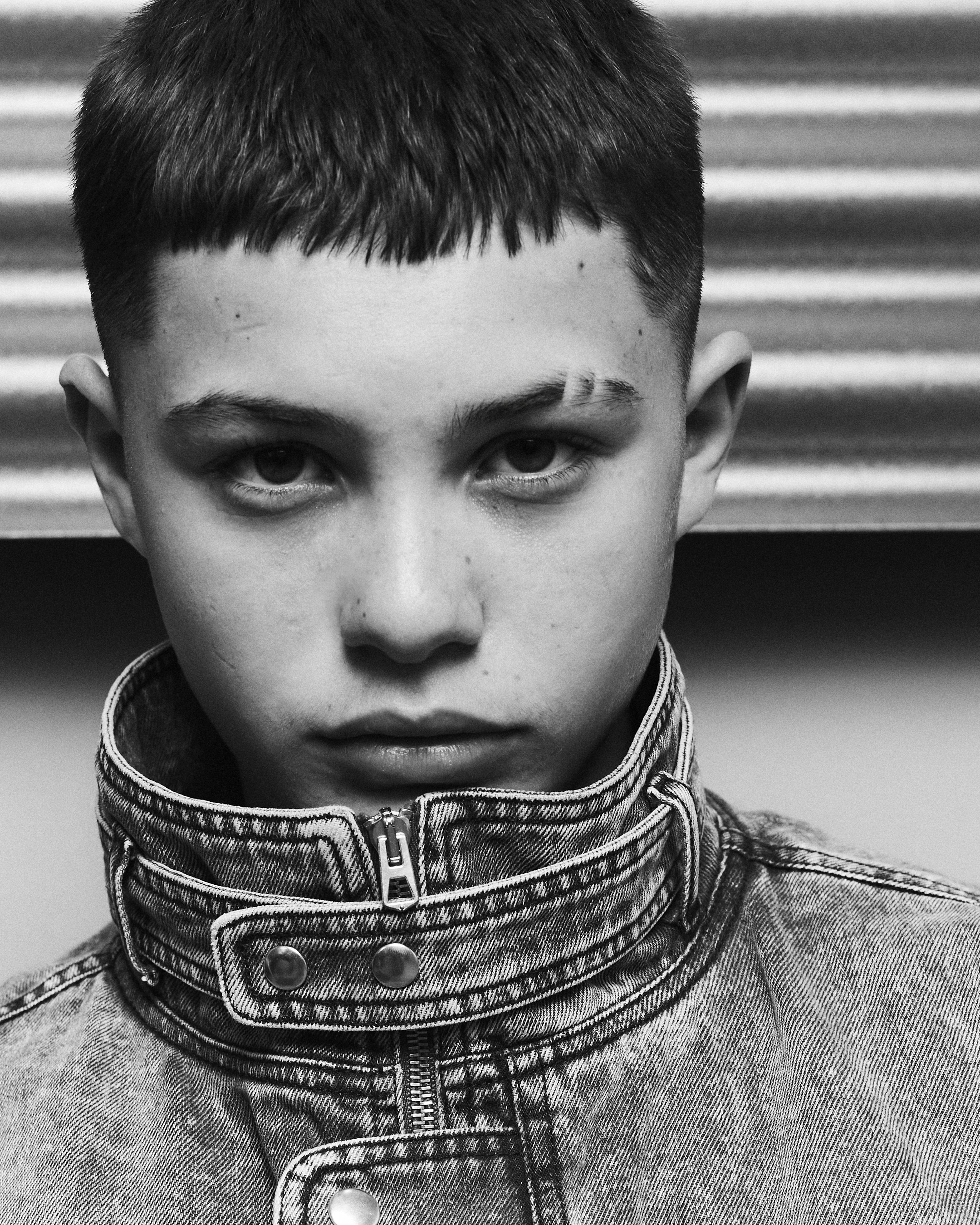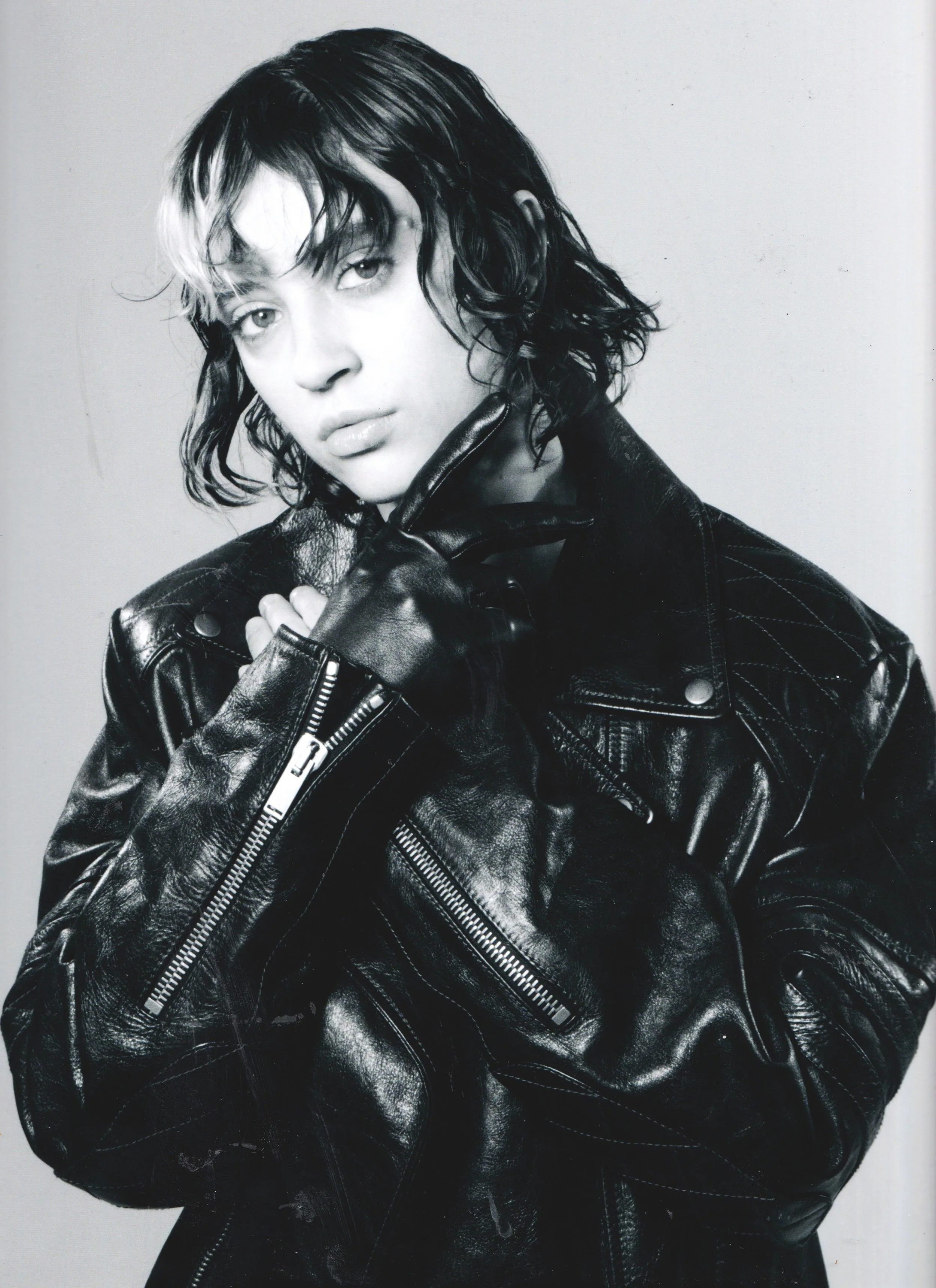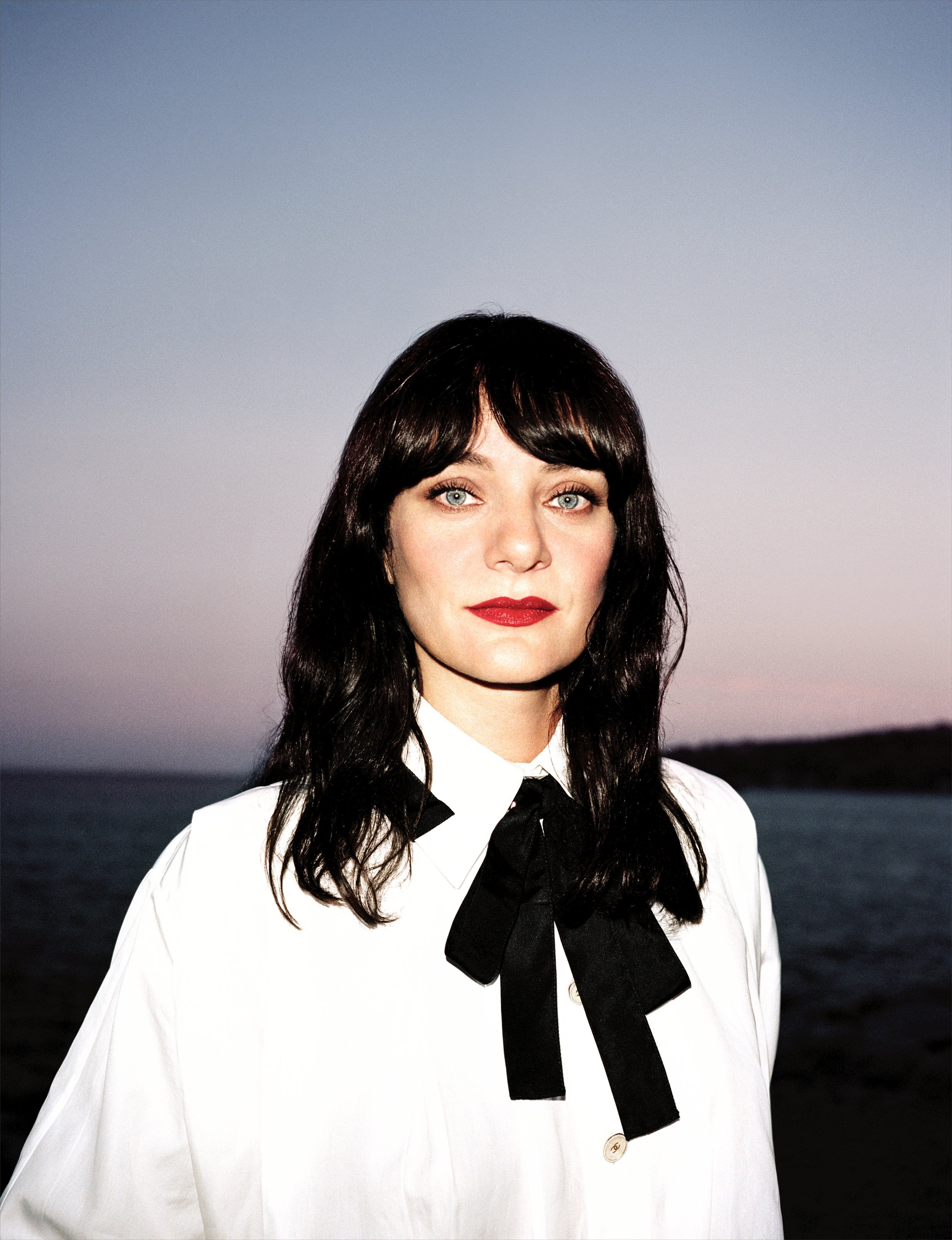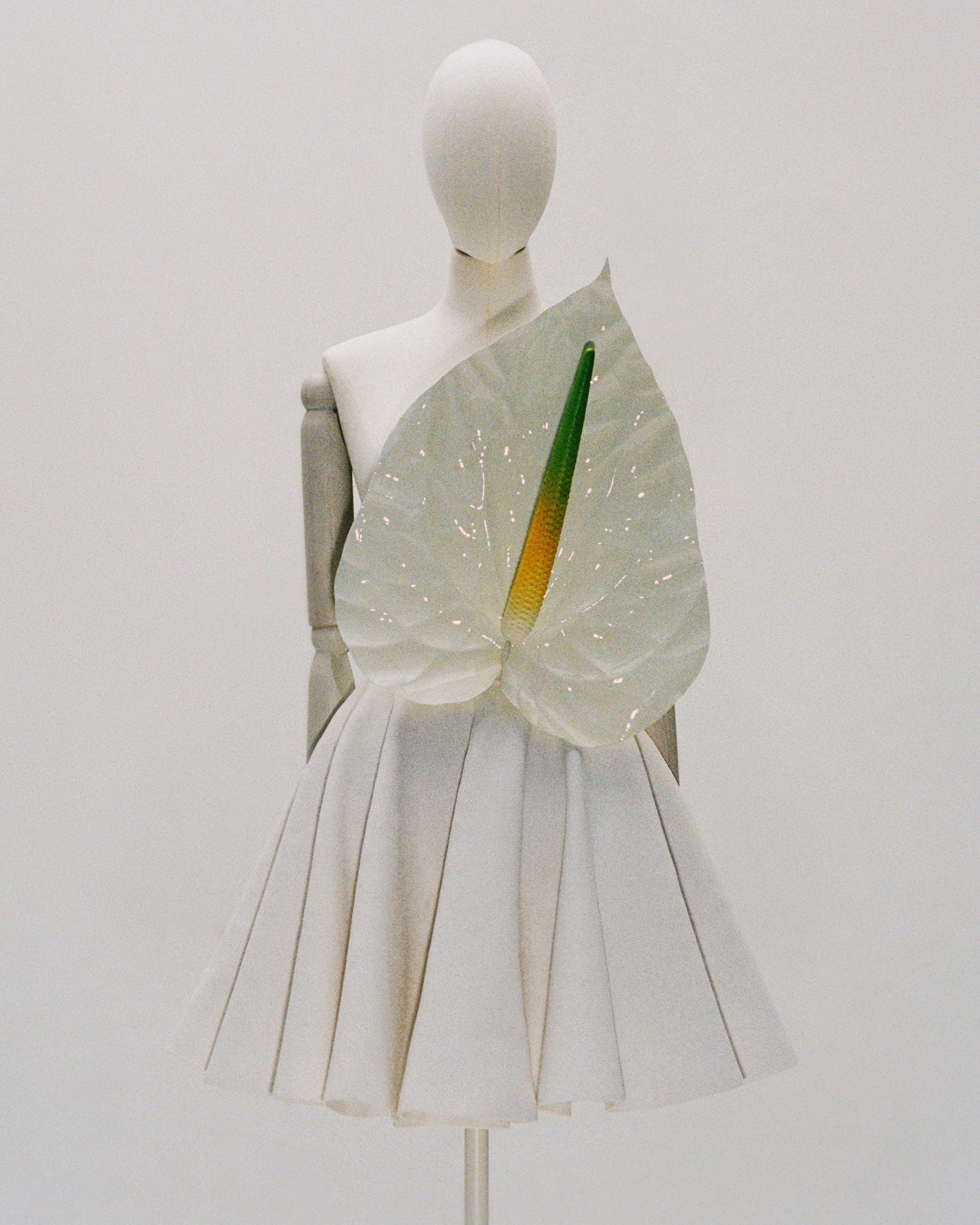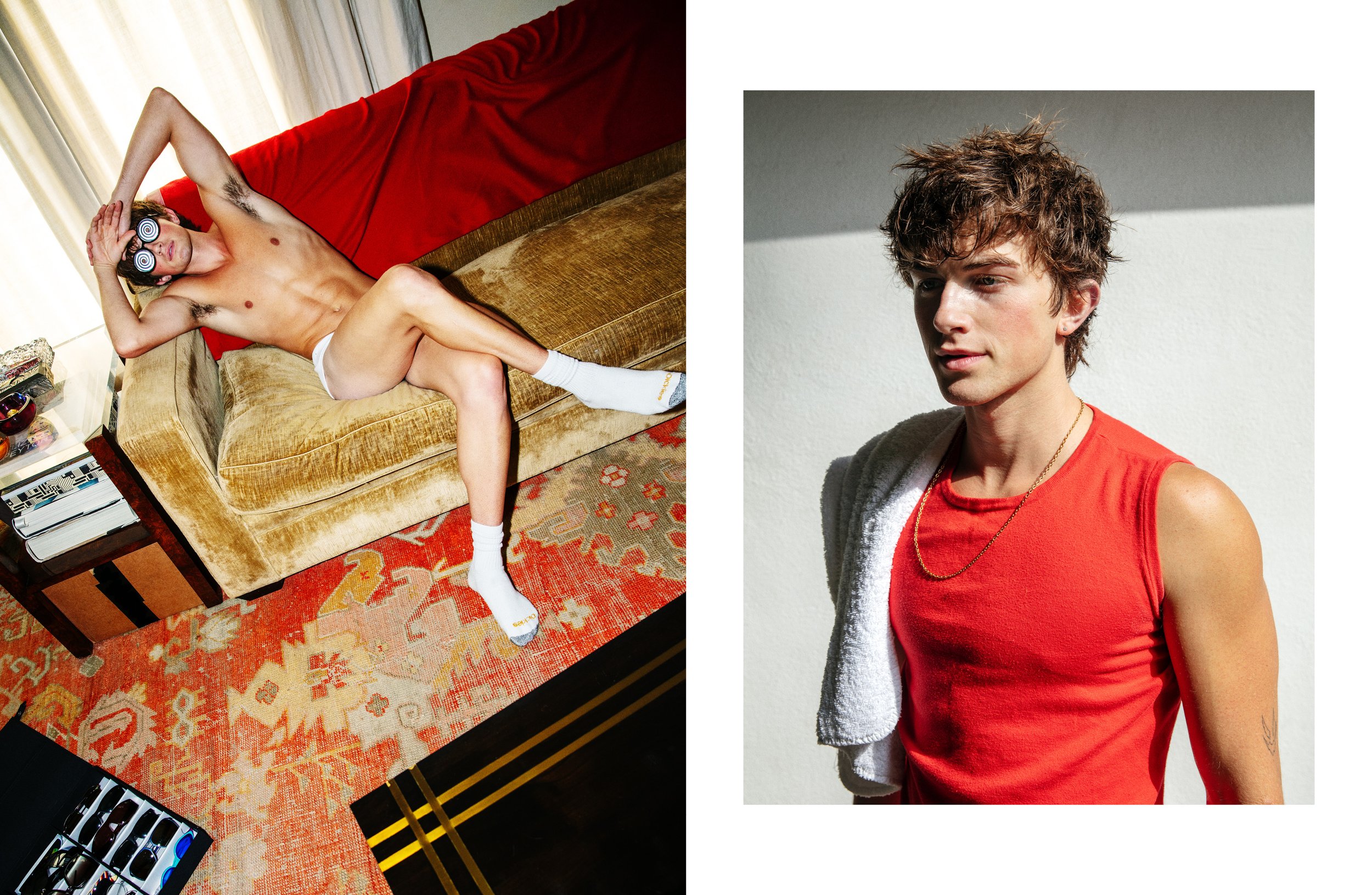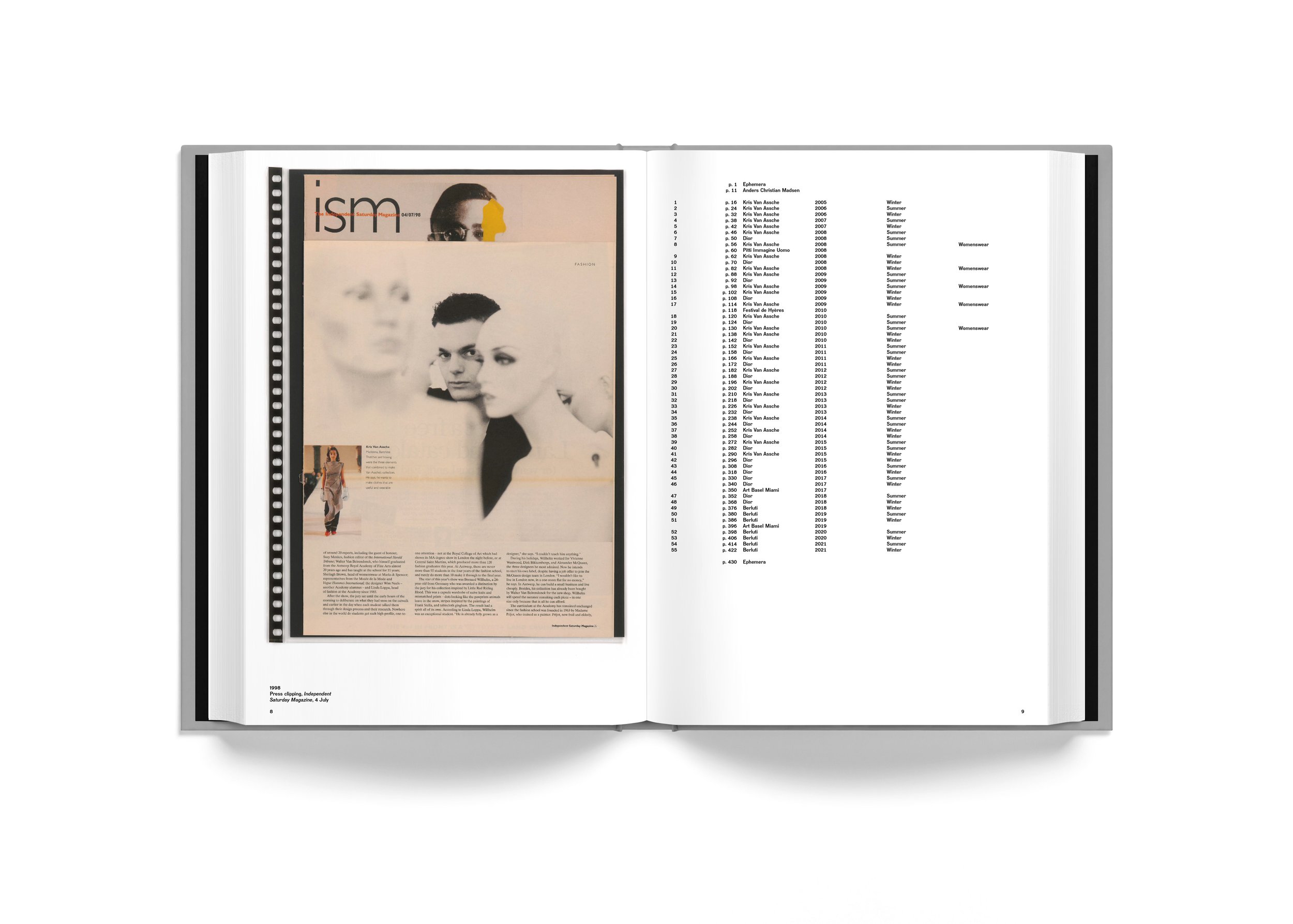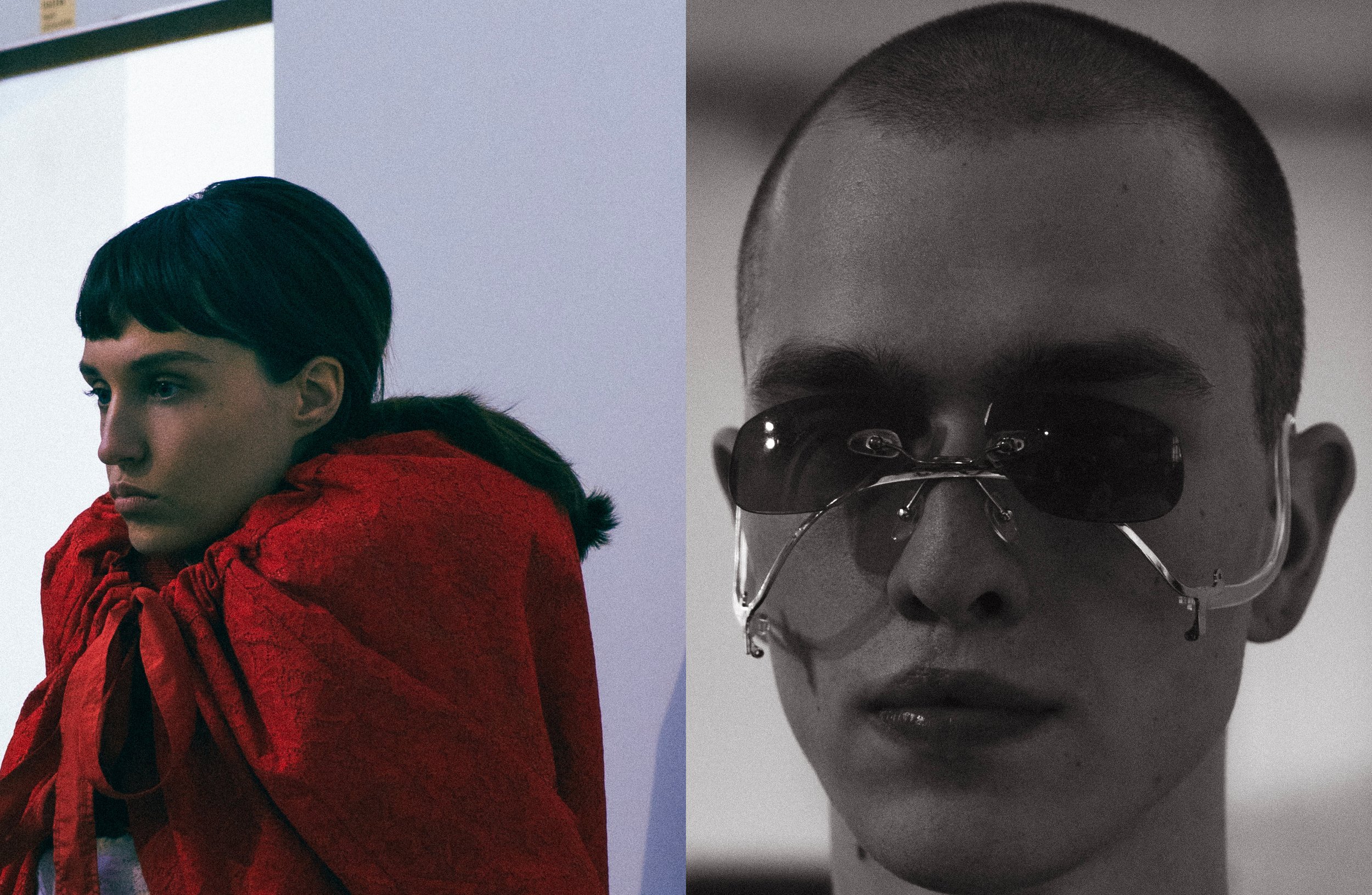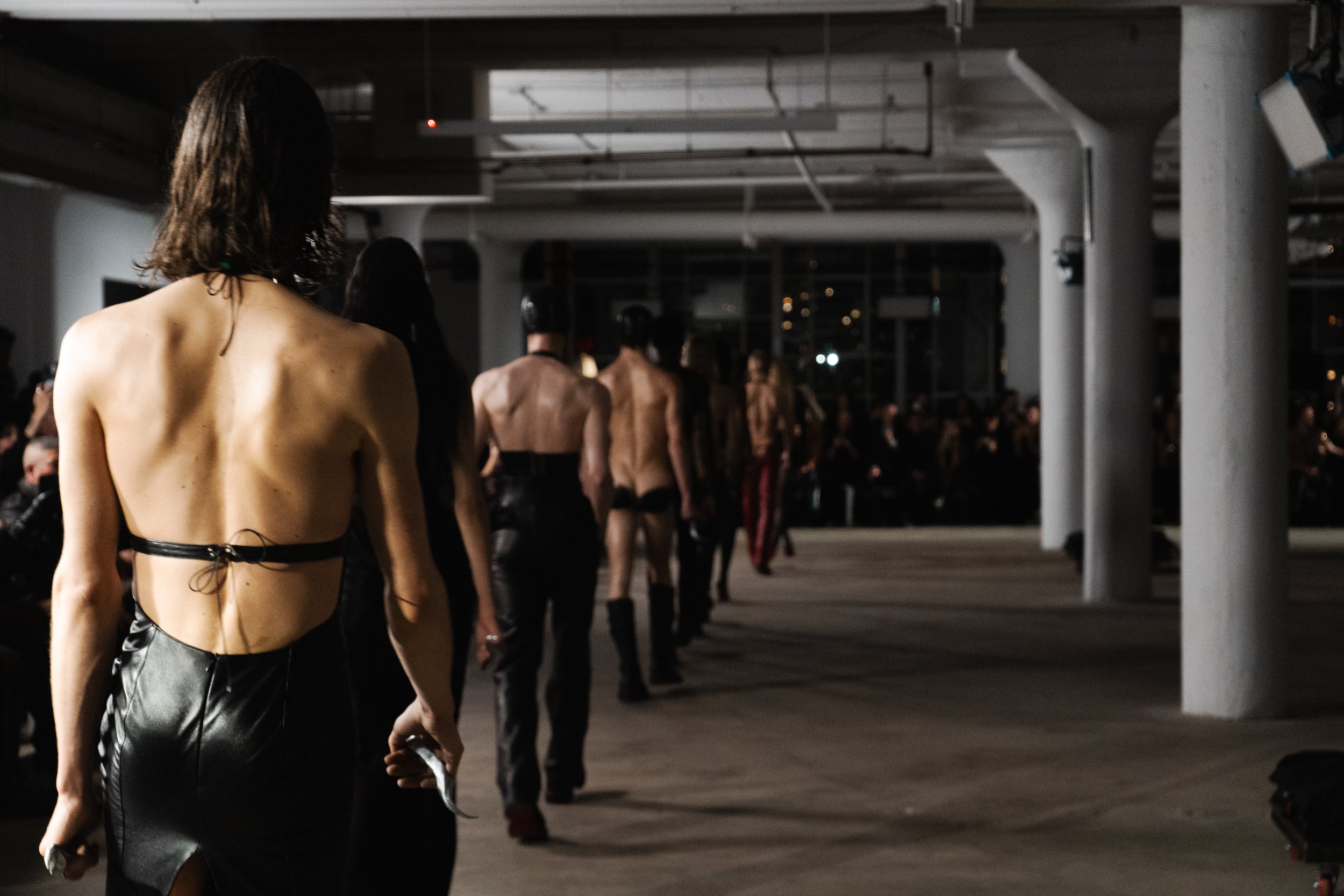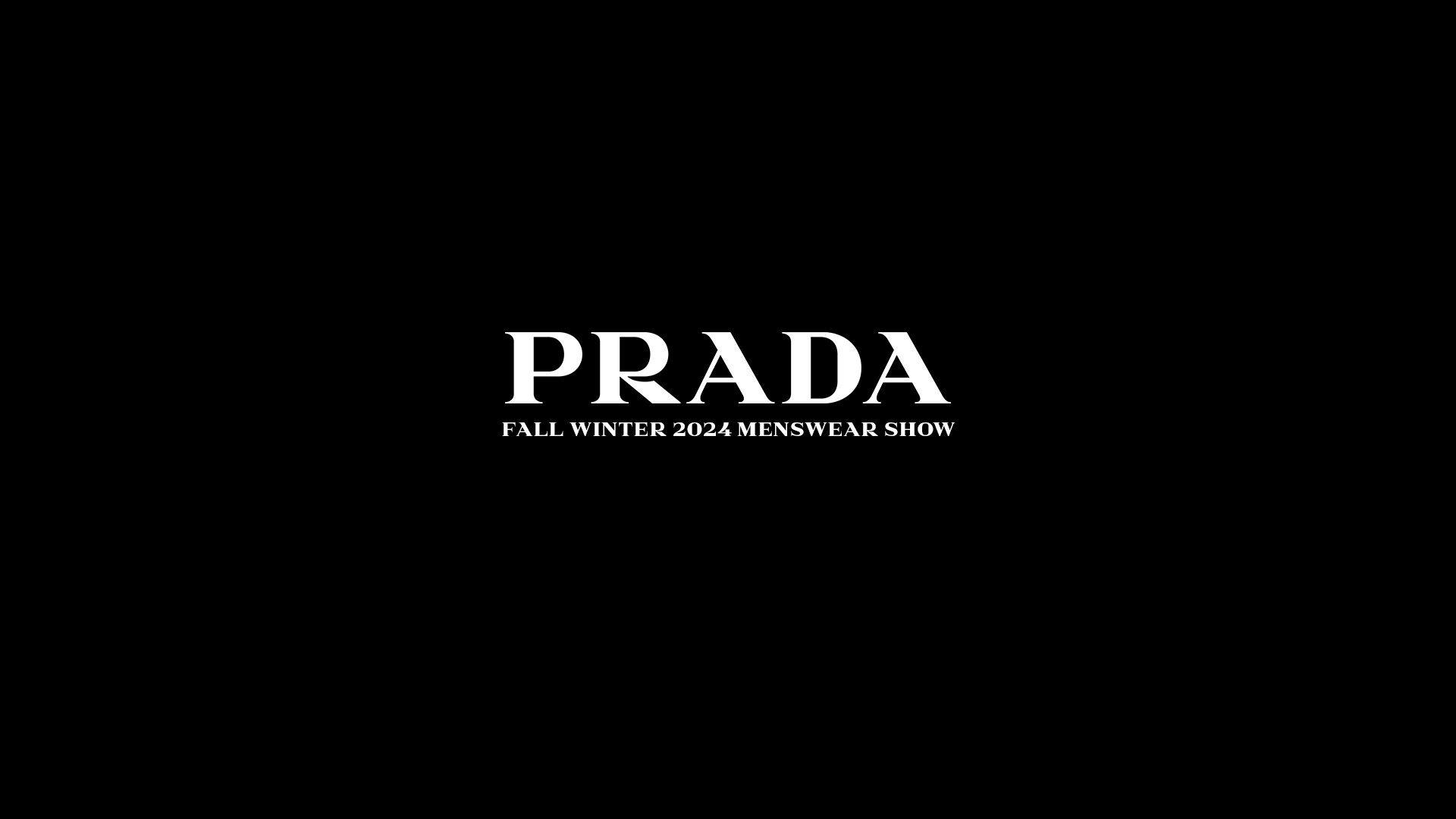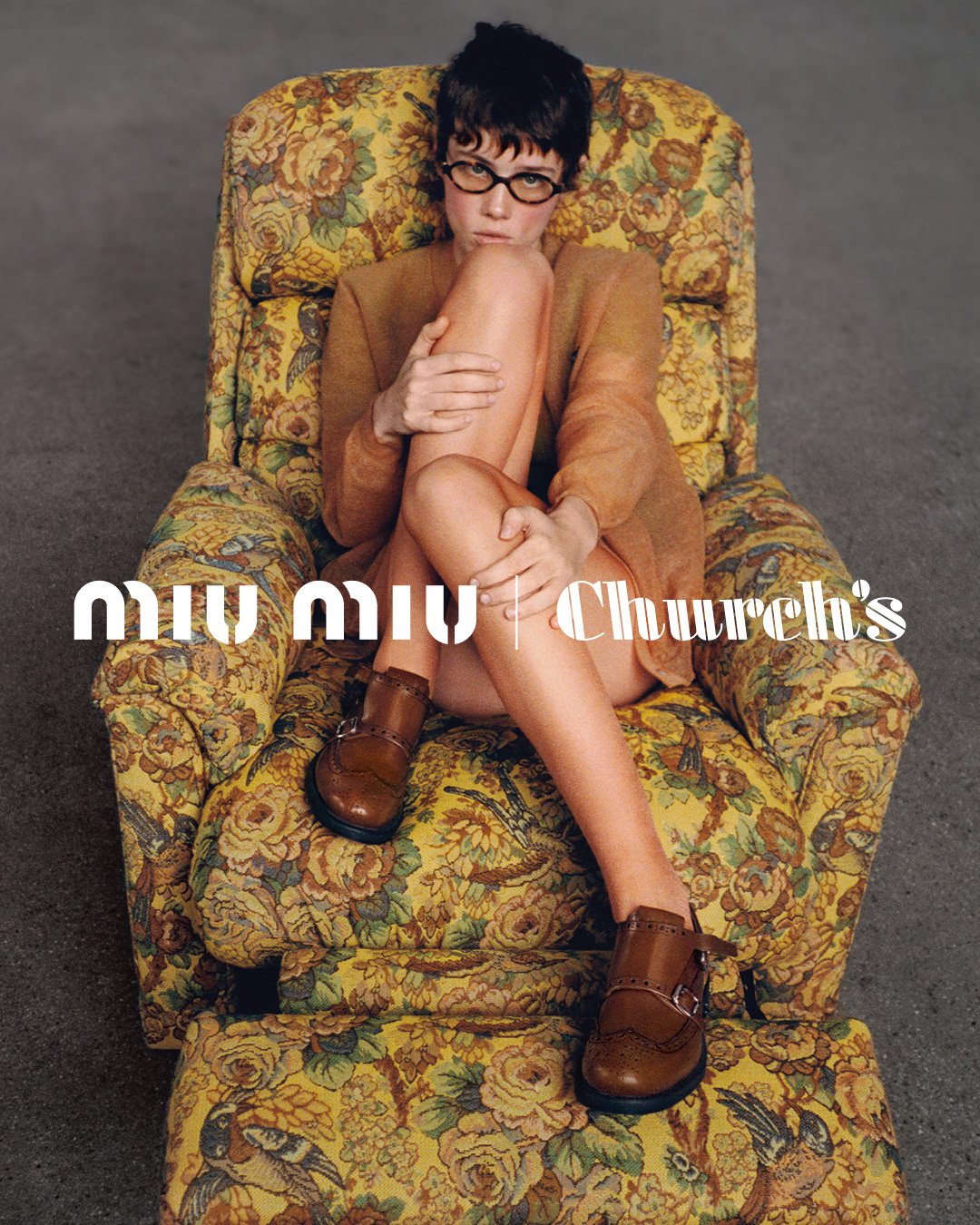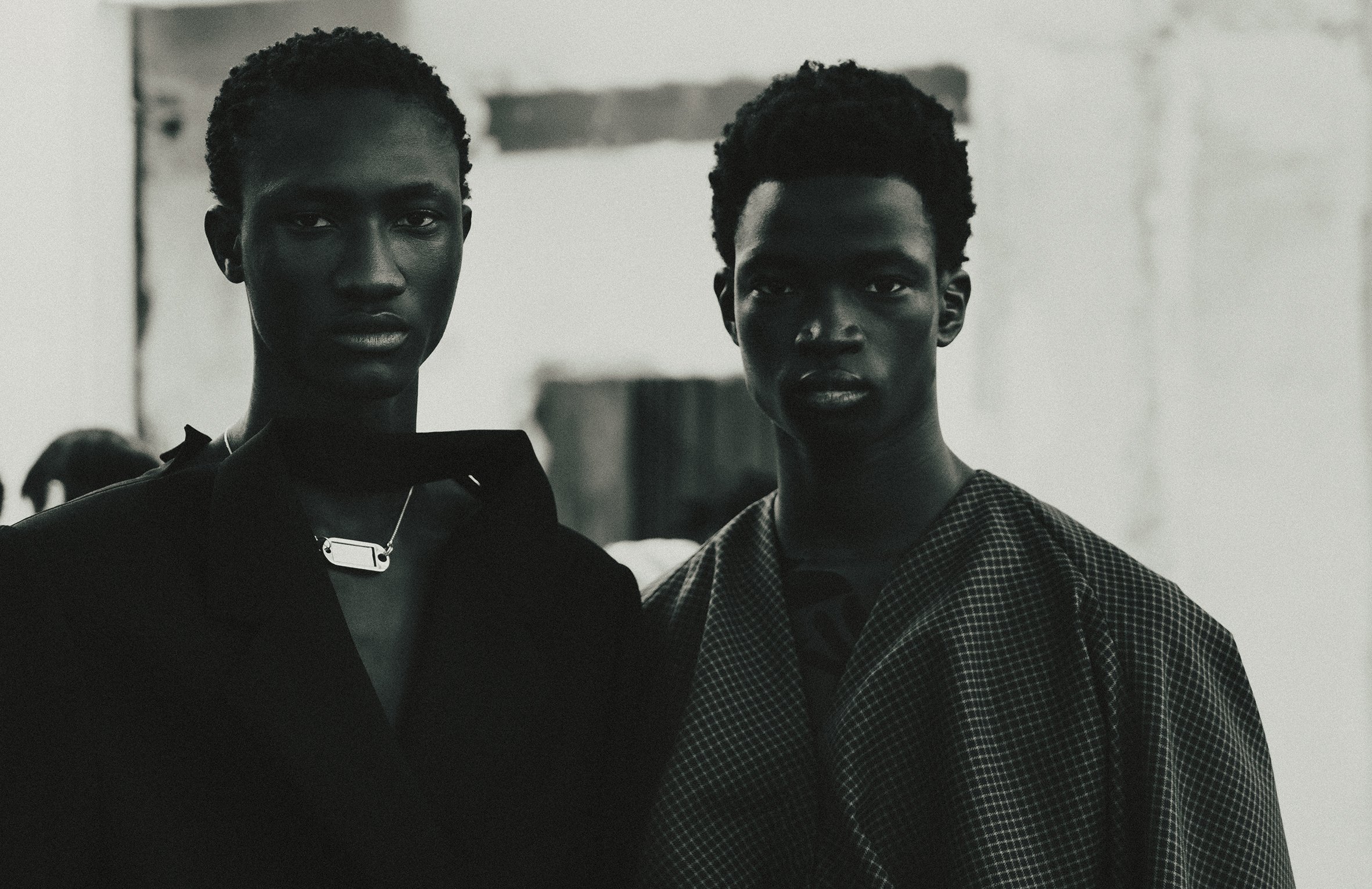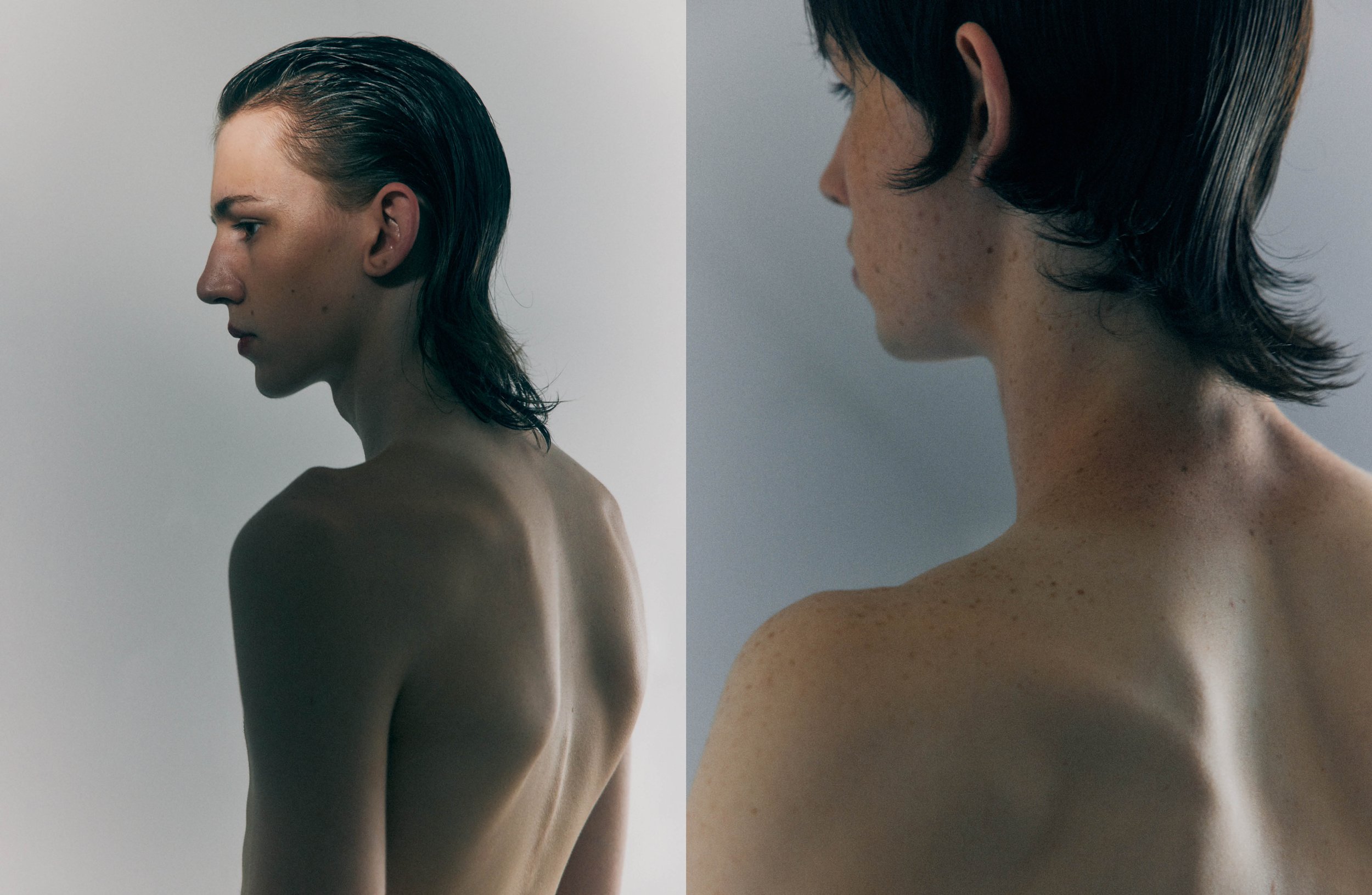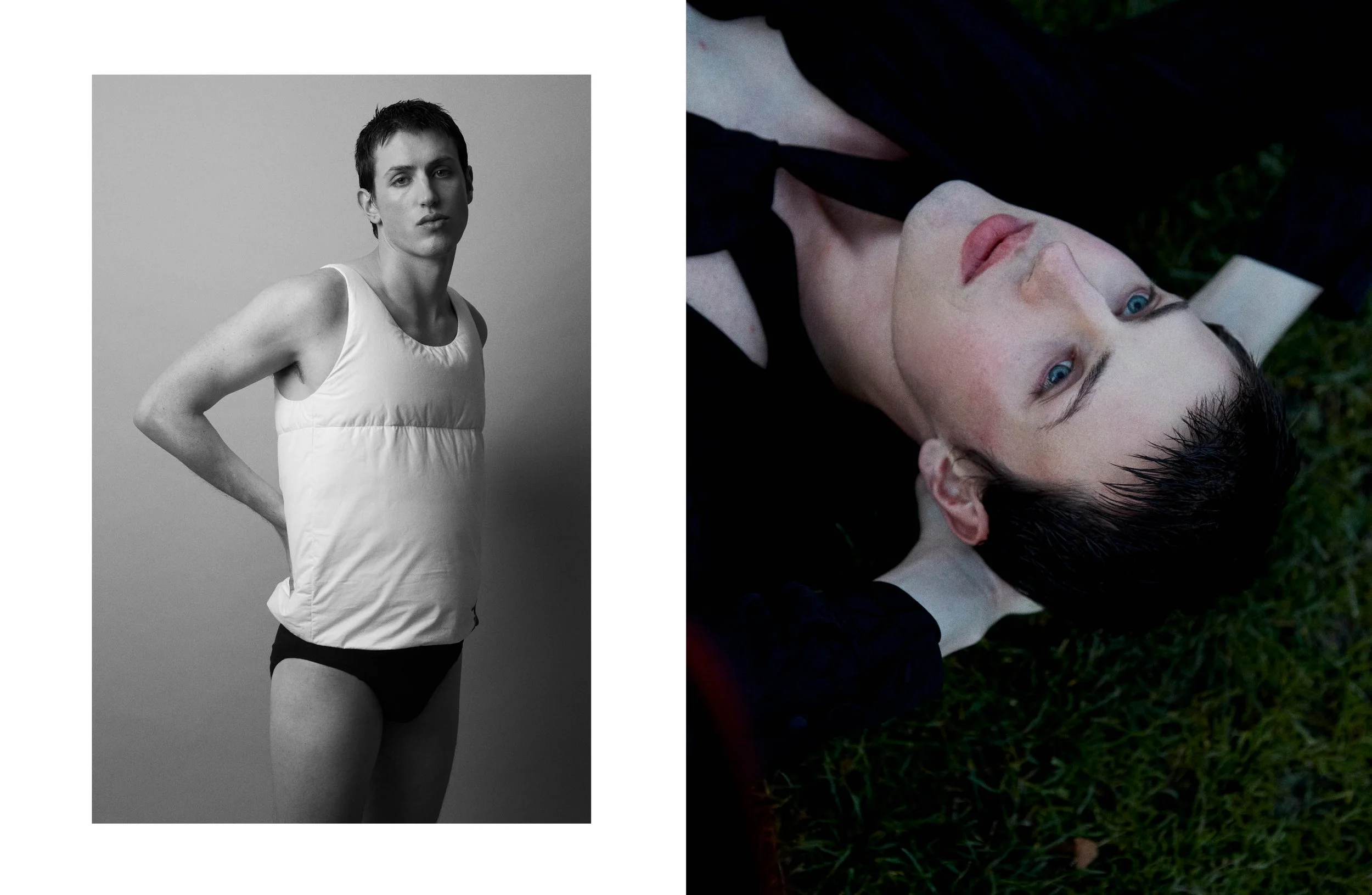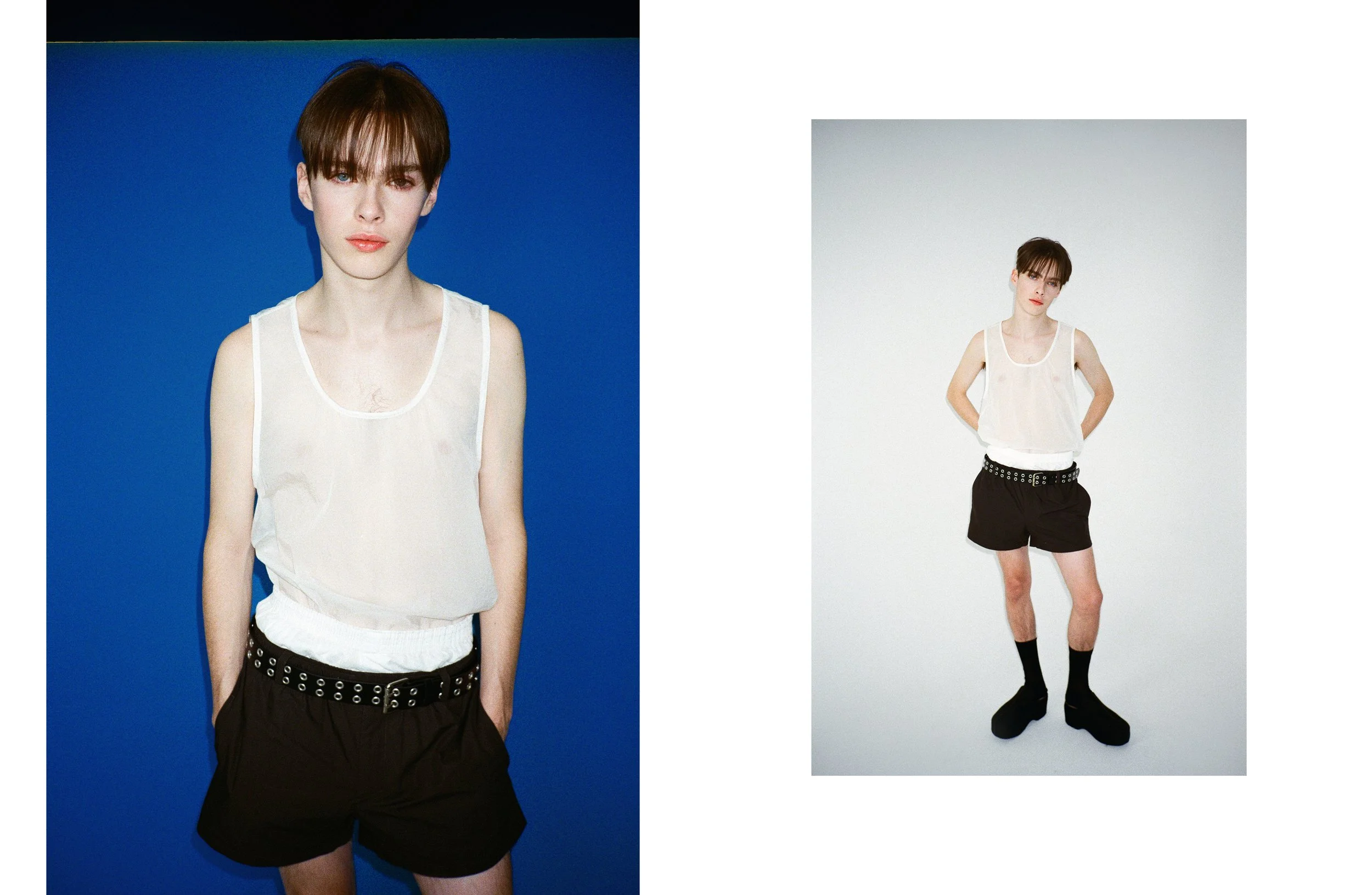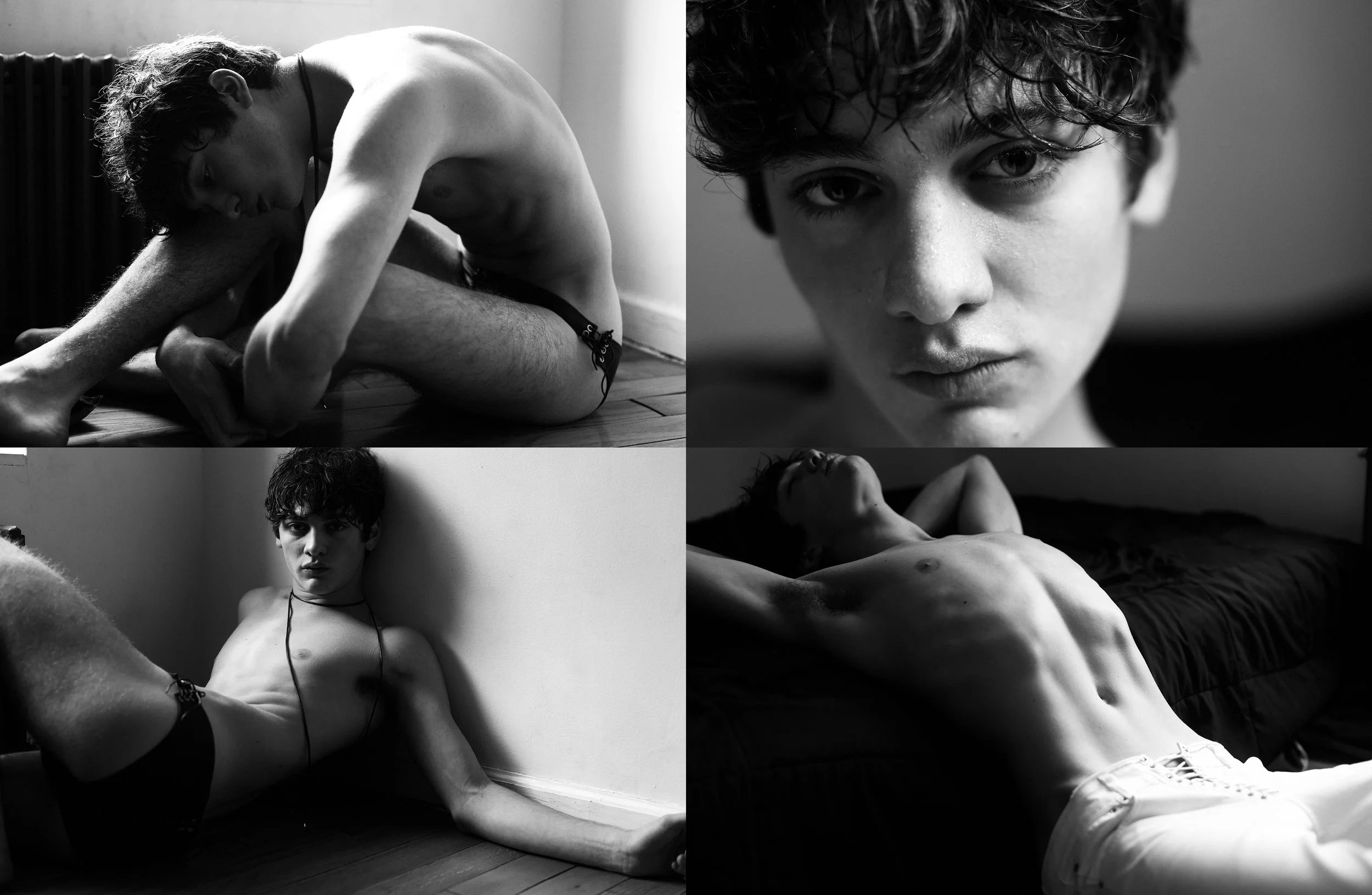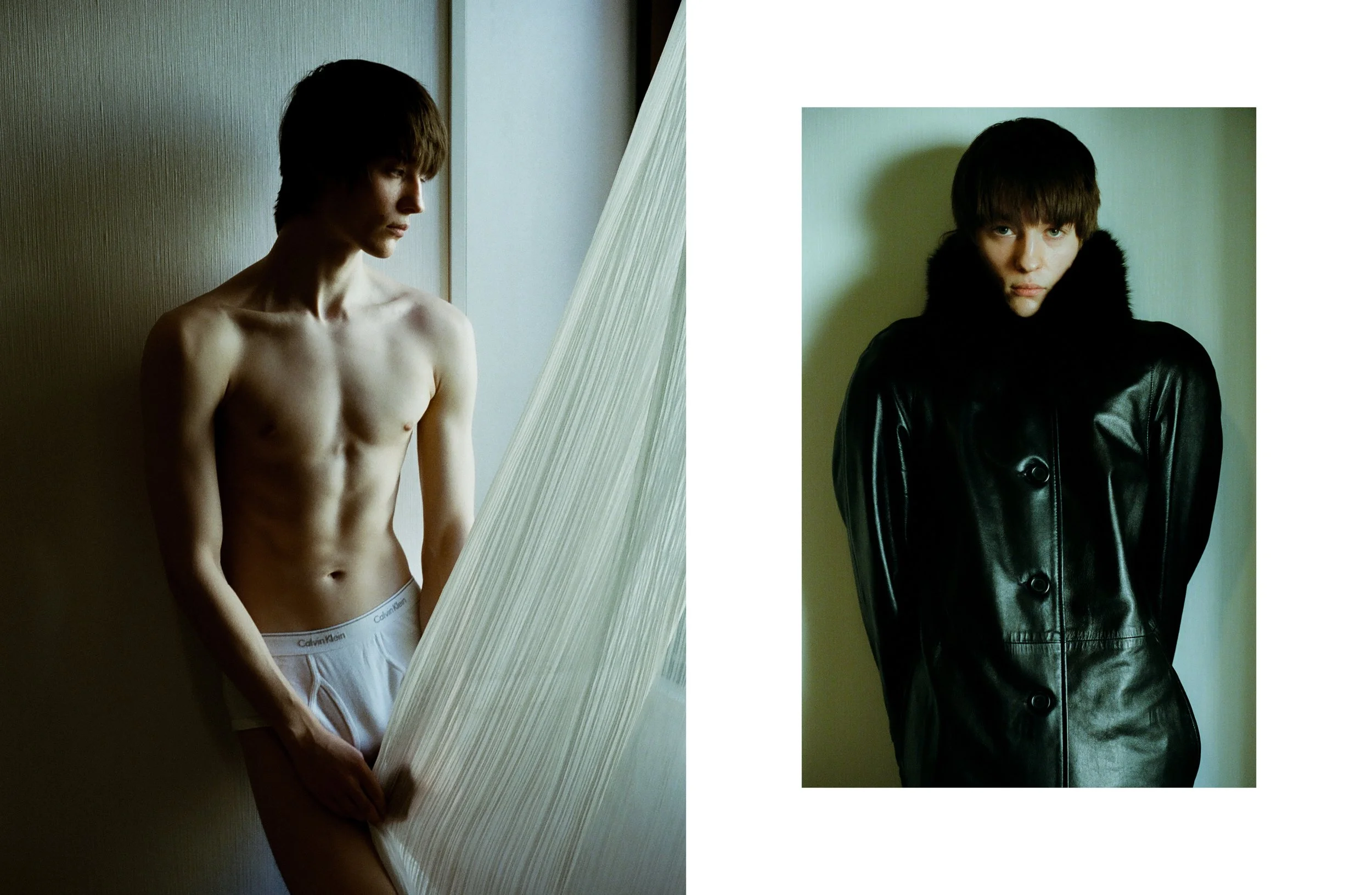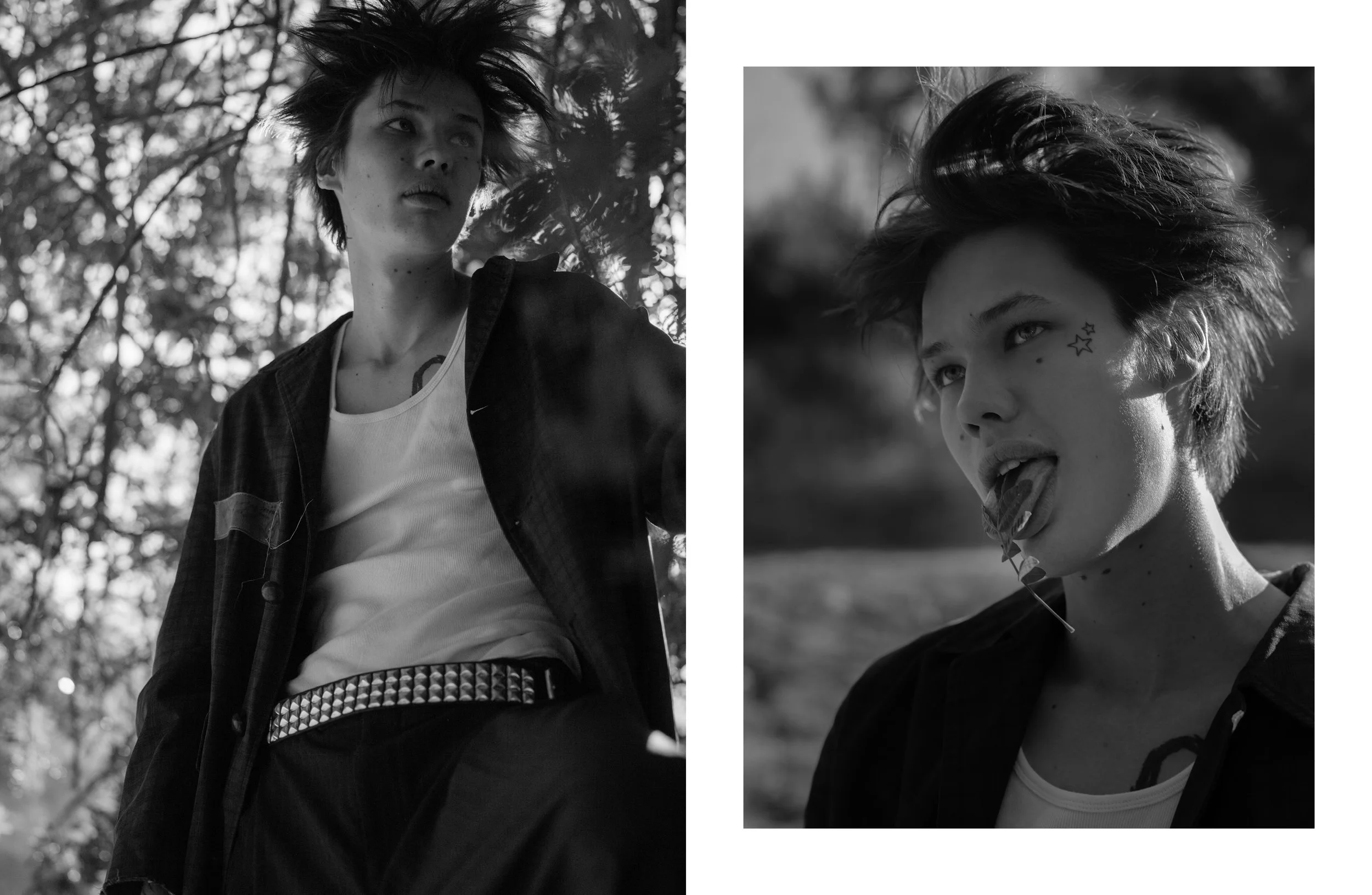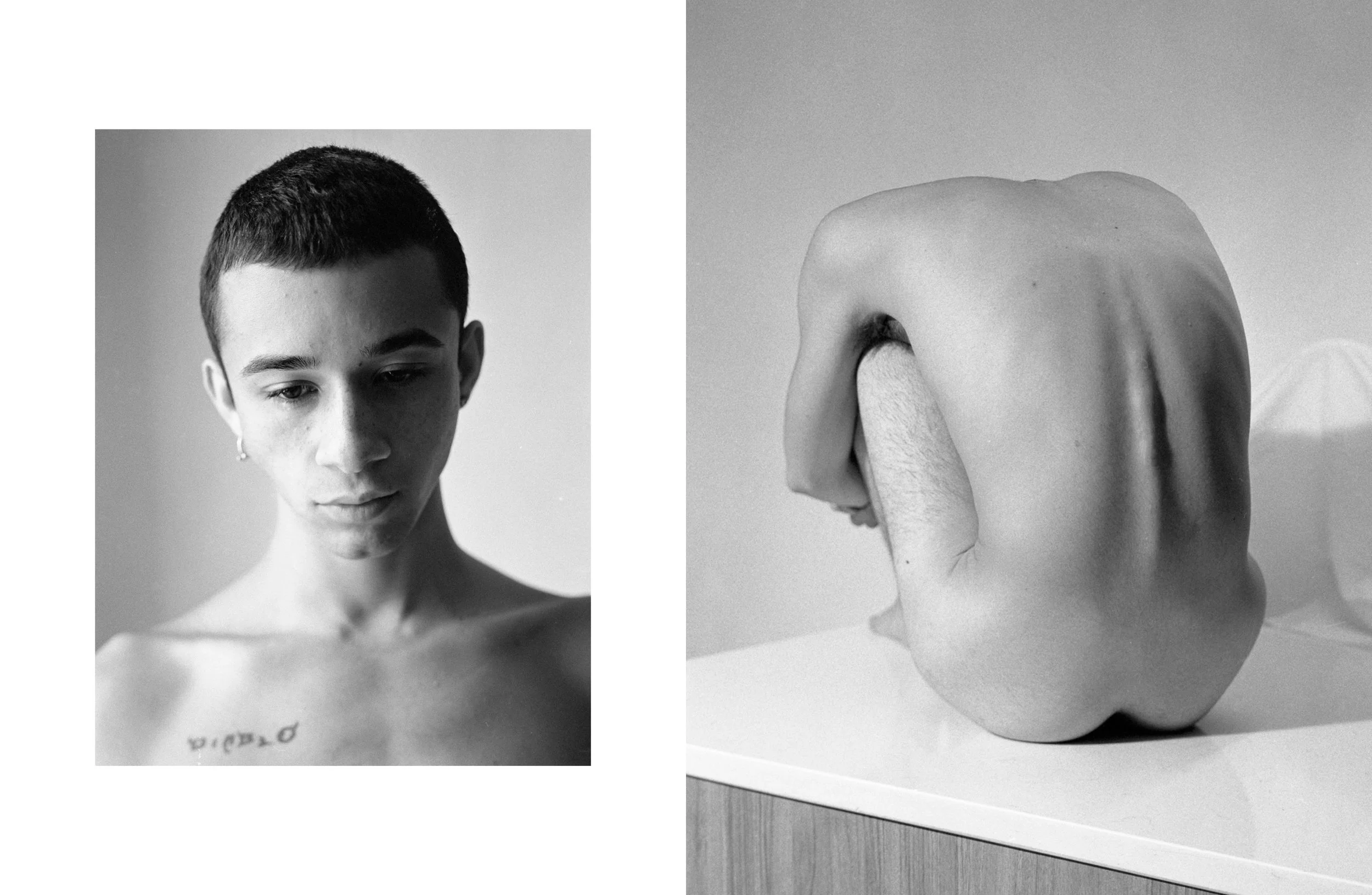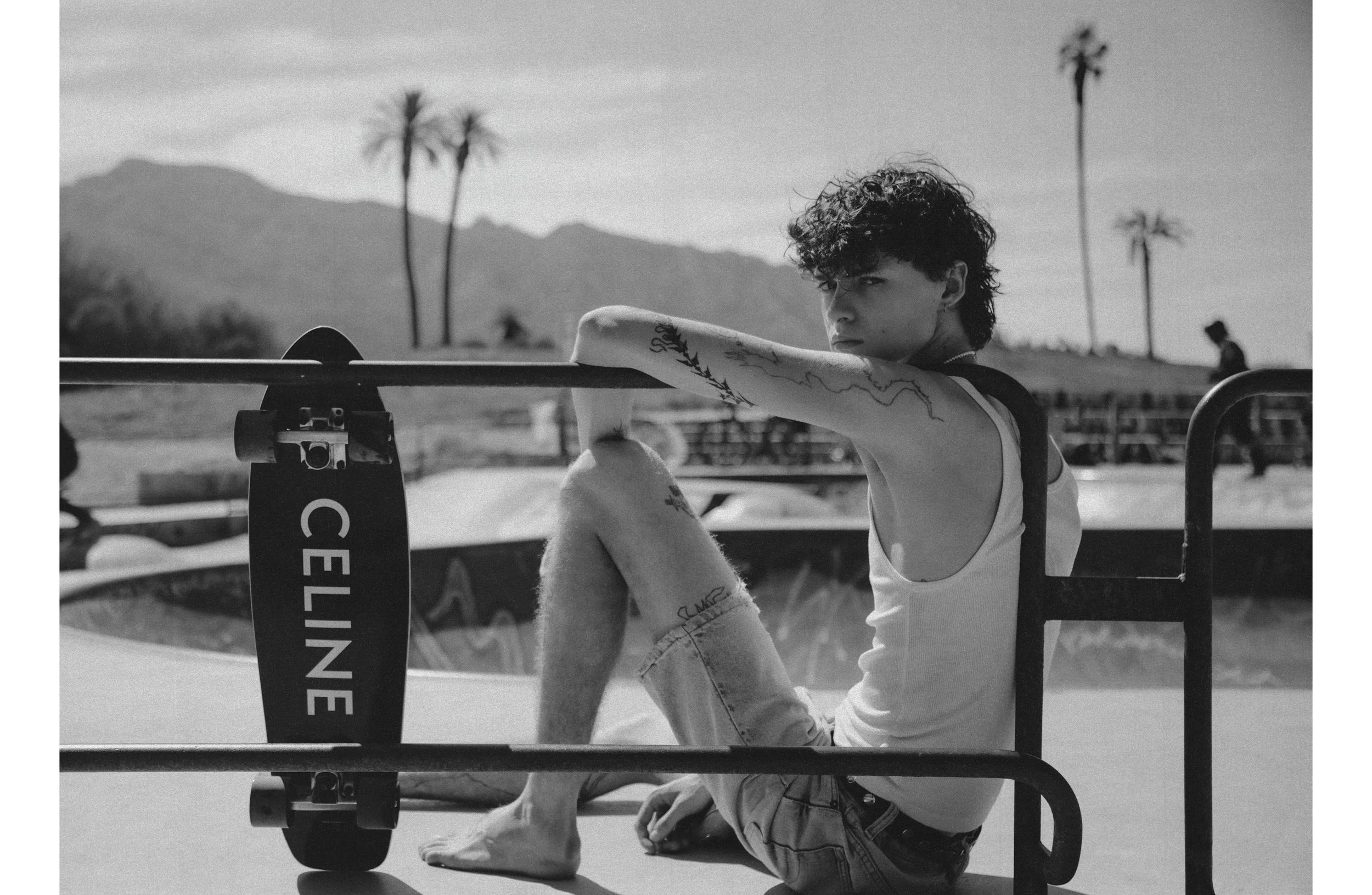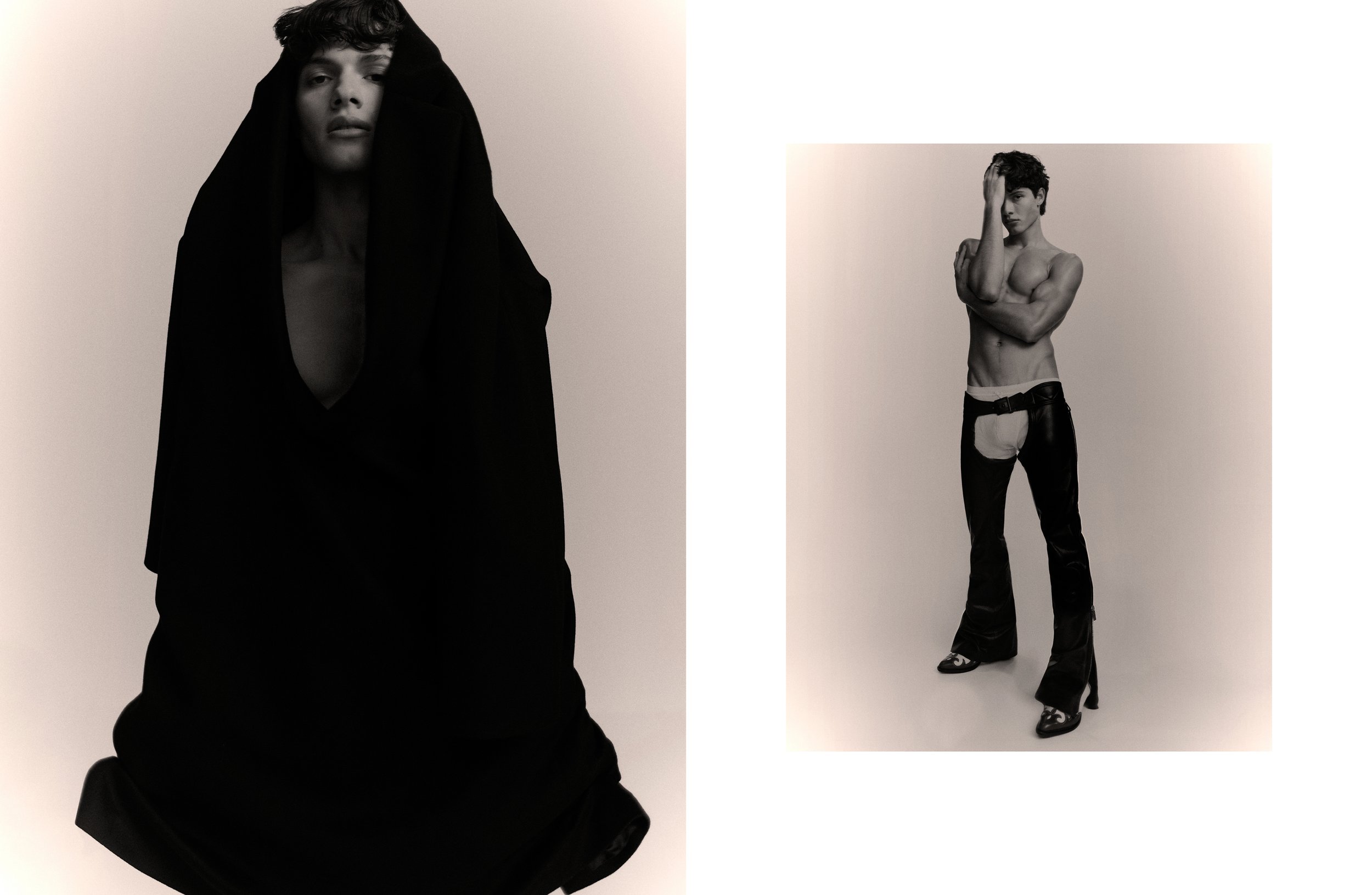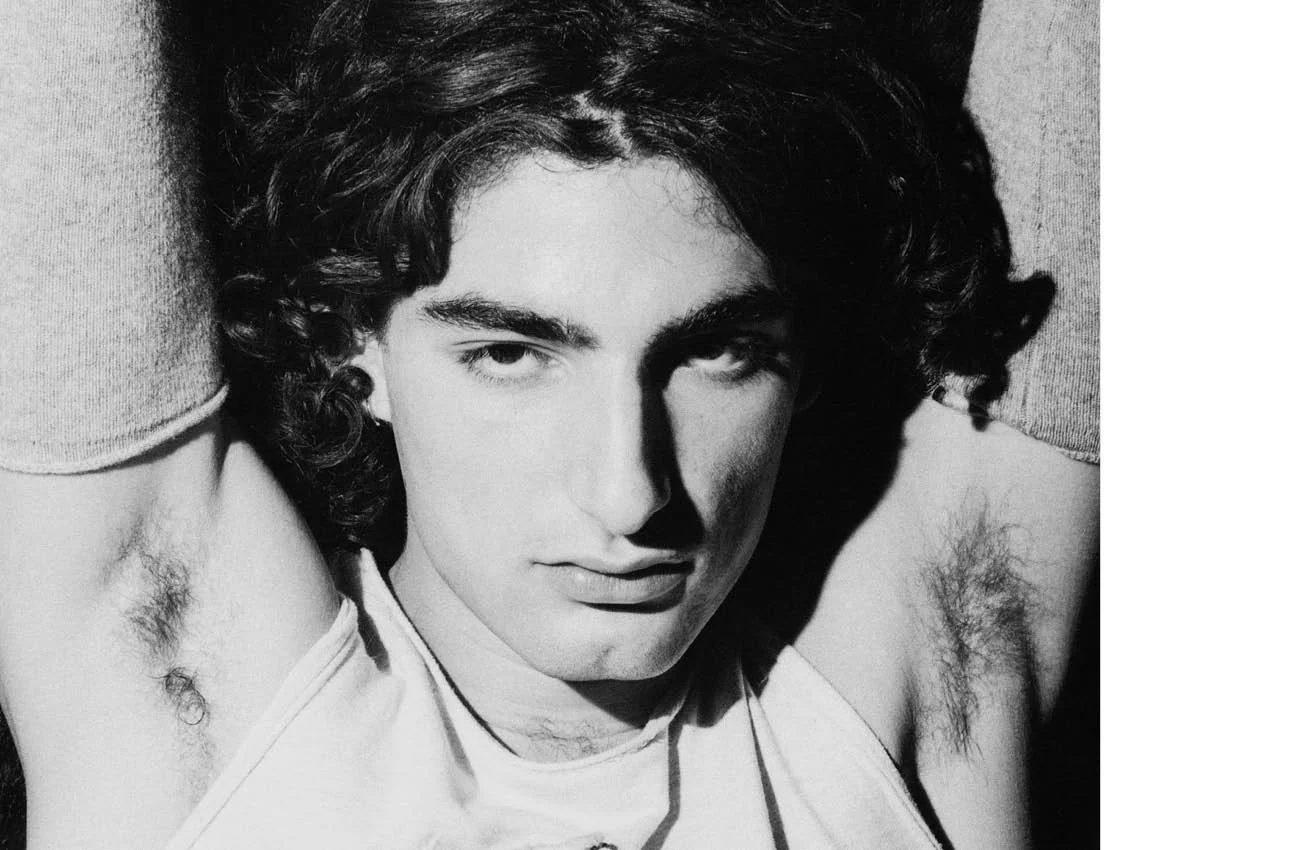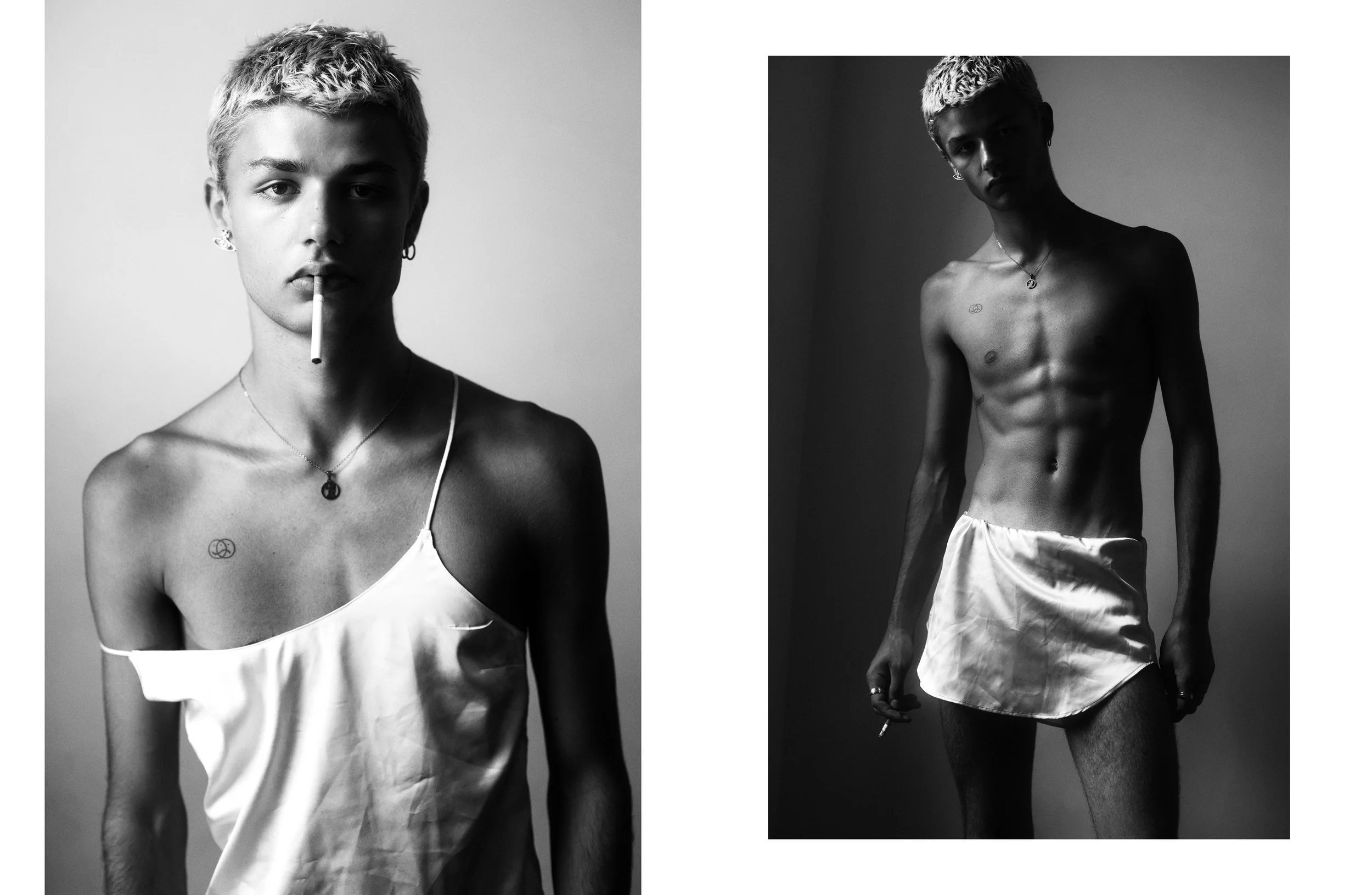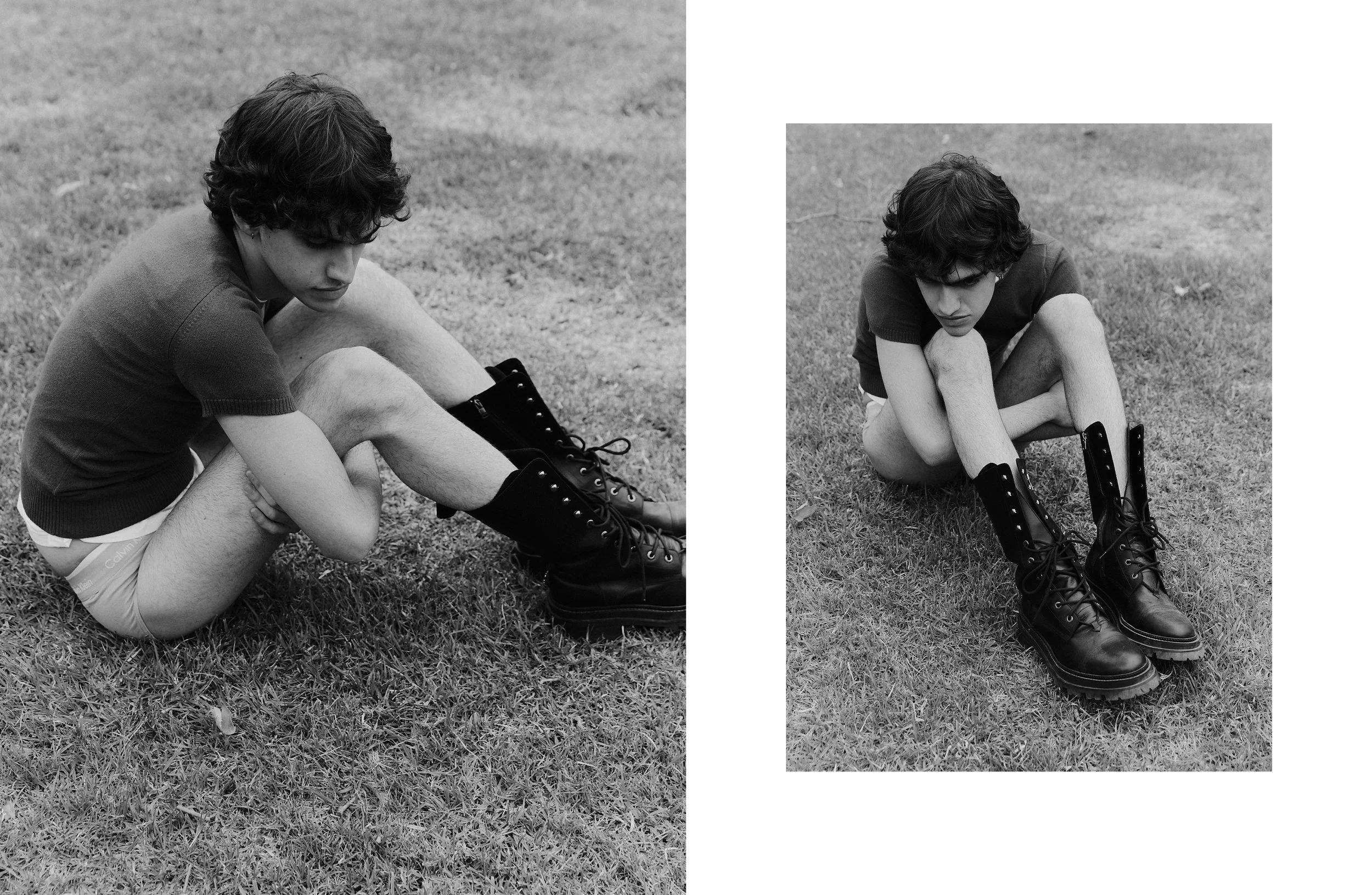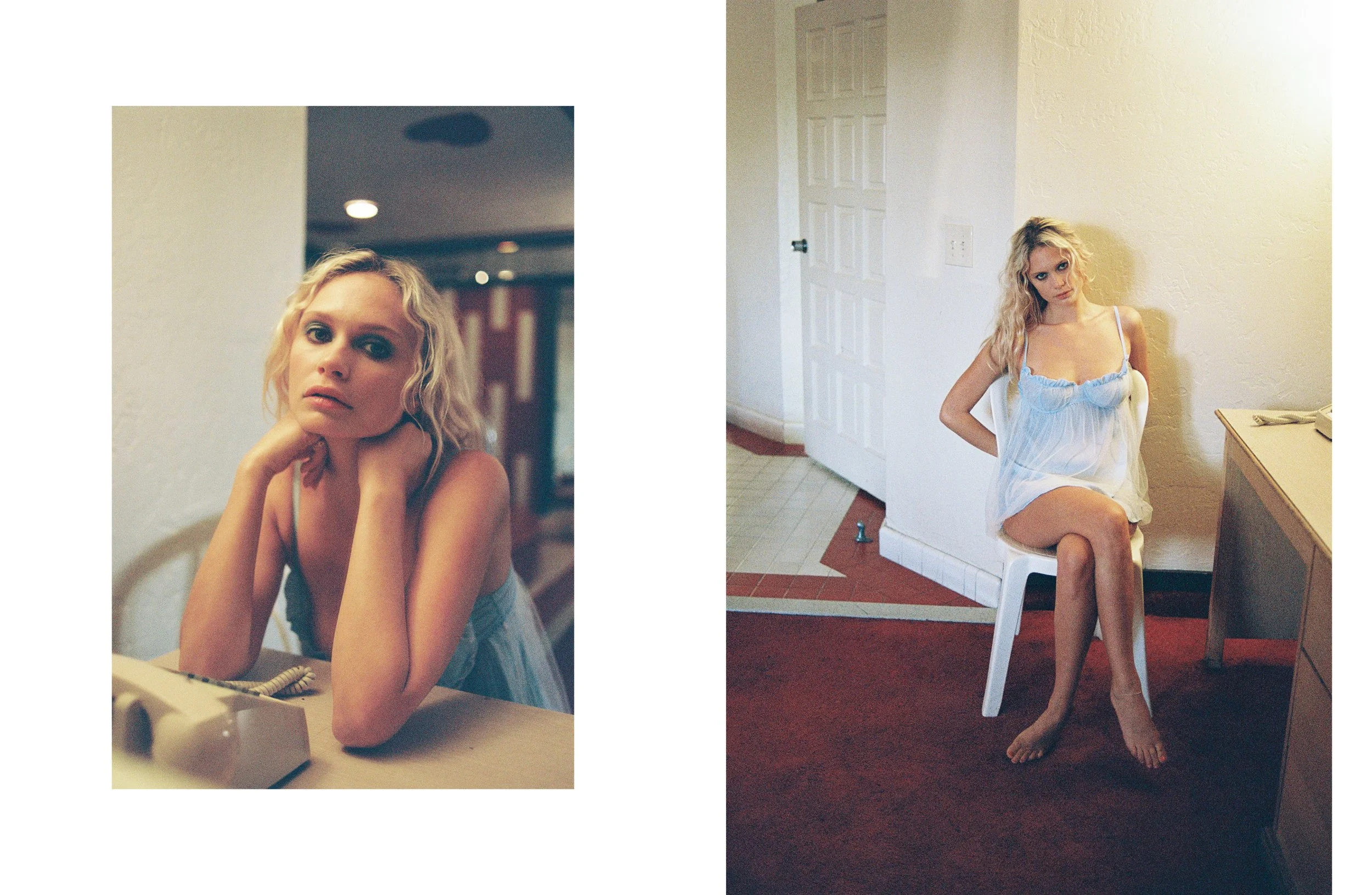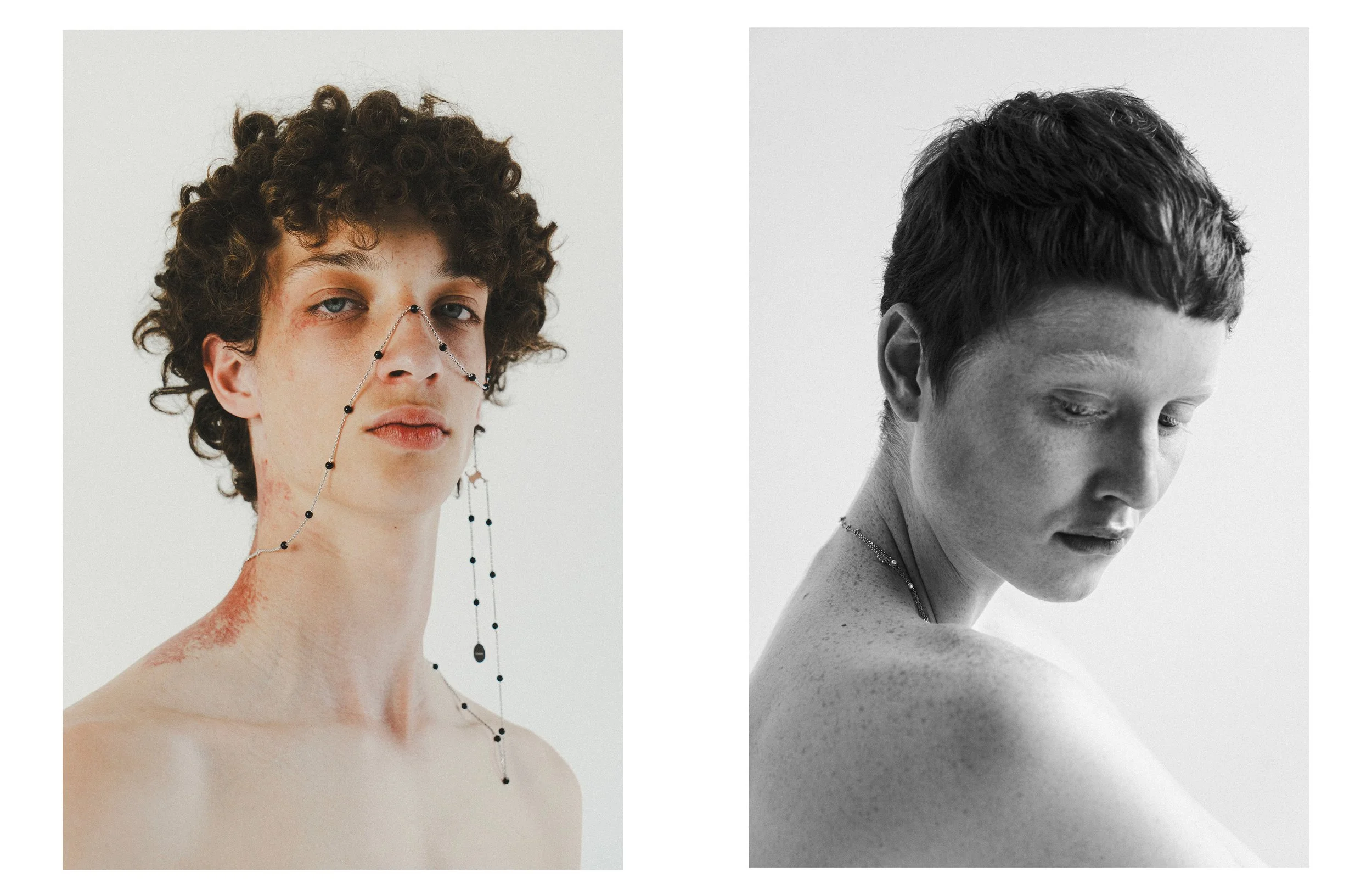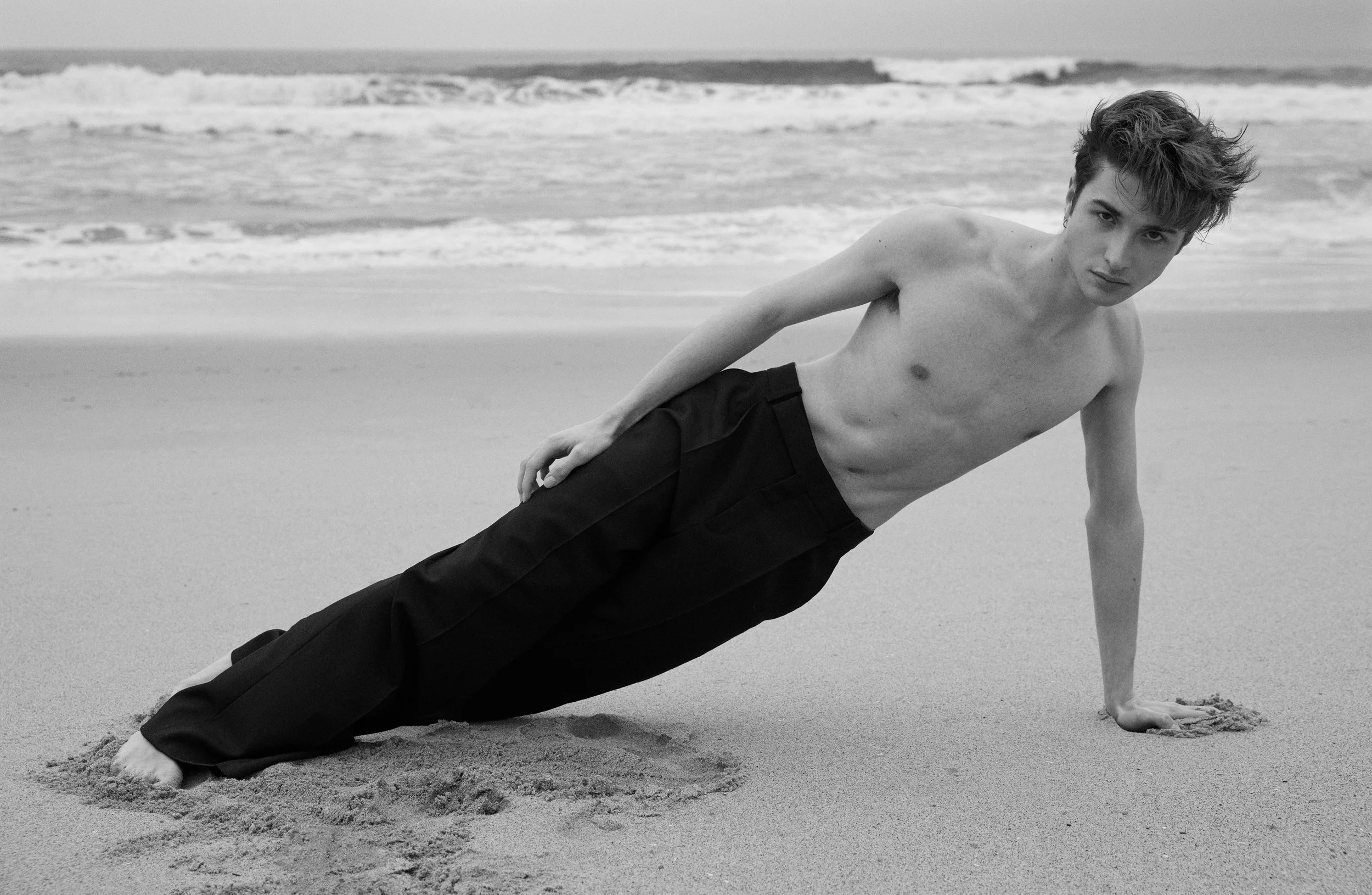“I took time away to figure out who I was, because I didn’t like all of the projections put on me that were starting to stick, and now I feel like I’ve gone back to the girl I was in the beginning, who I really am.”
Romanian-born, Montreal-raised, Irina Lazareanu - a former Ballerina-turned queen of the runway, was the fashion tornado dominating catwalks for the likes of Chanel, Dior, Marc Jacobs and Versace in the 2000s. She became muse to Karl Lagerfeld, and shot to stardom captured by photographers including Steven Meisel and Miles Aldridge. BFF’s with Kate Moss, she also toured with the Babyshambles (while being romantically linked to frontman Pete Doherty), and wrote an album with Sean Lennon.
Now a Mother to son River, the poet and lyricist who still possesses a certain je-ne-sais-quoi, has penned her first book, ‘Runway Bird’, decoding rock ’n’ roll’s love affair with style, while also revealing some true “I was there” fashion and music moments, with all the magical people she met along the way.
We wanted to get a feel for who Irina really is, beyond the gaze of the tabloids and “It-girl” labels of the past, and immediately when talking over the phone, you can feel the genuine warmth of her personality radiating over the speaker.
© Irina Lazareanu archives
So tell me how the idea for the book came about?
I left home when I was quite young and had been travelling for such a long time, and was always surrounded by people on tour or doing catwalk shows, so I was ready for time out from it all. I wanted to find the space to think and reflect on those crazy years, and get a real perspective on them - which you have to if you’re writing a book about the experiences in your life.
I moved from Paris with my son in February 2020, back to Canada to a cottage in a little ski resort village about 2hrs or so north of Montreal, and I love it because my parents and family are here. I had this idyllic idea in my head that I was going to have my journals and my typewriter and be like Virginia Woolf in front of a window, listening to Leonard Cohen and chain-smoking cigarettes while writing - but my son was two years-old then, and so I actually ended up listening to the sounds of Baby Shark, with yoghurt in my hair and also watched a ridiculous amount of Paw Patrol. So it wasn’t really my kind of romantic writers dream I had hoped it would be!
© Irina Lazareanu archives
I imagine it was difficult knowing where to start too?
Well no sooner had I got back to Canada, and the pandemic happened. So during the first lockdown, my son’s Dad, Drew McConnell, (bass guitarist in Babyshambles and also for Liam Gallagher's band), who’s usually based in London and tours a lot, came to stay and worked on the book with me for the music chapters. Honestly it took the both of us to remember all of the events, not only because it’s so long ago now, but because back then we were mostly piss-drunk, haha! We thought we would get lots of writing done, but instead we ended up watching so much TV and eating a ridiculous amount of cheese and wrote like two paragraphs! I think we felt that with the state of the world at that time, and all the bad news, it felt so frivolous to start writing a book about fashion and holidays with Kate (Moss)!
© Robert Fairer
You eventually consulted your old journals to help jog all of your memories and start the process though, right?
Yes I’ve been keeping journals since I was a kid, and I always take them everywhere. Back in those days people used to write things in them and I would write poetry too, so I was able to reference from them, and we scanned things from one particular night, or an event, and started building collages for the book.
Once I eventually got going with the writing during the Summer of 2020, I was finished by Christmas. This book is so many different things, and I really wanted to do a love letter to all the people who inspire me, and the way in which we met, or fond memories we have together. So much happened in those years, and it was like a whirlwind of events, so I felt inspired and nostalgic, and grateful to look back and reflect on everything. I don’t touch on anything dark or difficult, not because it didn’t happen, but because I chose to look the other way. I chose to focus on the positive moments, the defining moments and people who shaped me - and all of the people in the book, who are still alive, are still part of my life. I wanted the freedom to write about how that time made me feel, and how those people made me laugh, or how I picked up something from them style-wise, or music-wise or life-wise.
© Philip Gay
Was anyone shocked when you said you were doing a book, having had some crazy times back then I’m sure?
Yes! When I contacted everyone mentioned in the book and told them I was writing it, there was silence, (laughs), and some people were like, what do you mean?? And I had to say, no don’t worry, it’s not that kind of book! It’s quite light-hearted, funny and upbeat, and it became a collaborative experience with all the ideas we all shared.
How did you source all the pictures to then fit in with the text?
I ended up with hundreds of old tear sheets and polaroids and old pictures, but you know, most of the stories are before the age of the iPhone. We weren’t snapping pictures all the time back then, someone might have had a Polaroid or a disposable camera, but it wasn’t like today. I needed to find pictures that illustrated the chapters, that I could visually create the text around. I keep everything, so I spent a good month going through all of my archives, and I turned into a Nancy Drew-like detective! trying to track down people down who were at Babyshambles gigs in 2005, or who were backstage at a show, or a friend of a friend, anyone who might have had pictures.
It took months, as some of the photographers I worked with have retired, like Pennie Smith, who shot all the iconic pics of The Clash, and I really wanted one of her shots of The Babyshambles lads for the book. I managed to track her down through Mick Jones (The Clash), and she lives in the countryside with no phone and no internet, and so I had to write her a handwritten letter through the post, and she was so gracious and had the original negative in her basement developed into a print for us.
© Gavin Doyle
That’s interesting about Pennie not being switched on to this digital virtual world we now live in, which is something Olivier Zahm refers to in his foreword that he wrote for your book – as he mentions that it bears witness to those years when ‘being present required presence’. Is that why this is now the right time for you to revisit all of those years?
You know, I’ve got ADD, I’m hyperactive, my brain goes too fast, and back then I was always going going going, I didn’t really understand what was going on, but the times I do remember, I recall quite vividly in the book. Like when Sean (Lennon) and I wrote Strange Places, or the holiday with Kate (Moss) and Mick (Jones) from the Clash, or when we told stories on the back of tour buses, or wrote poetry and passed it on to one another, and talked about books we loved. There was a human connection and it was formative for me like a sponge, absorbing and learning things and gathering creativity from all these different people. They were real, lived experiences, with no distractions from phones, or Netflix or someone needing to share photos on their social media, we just lived in the moment. Also we were a bit wild back then, so I’m glad quite a lot of things weren’t captured on phones, thank god!
Well one thing that has been captured in the book, is the many style trends you were all rocking back then. Was it hard to delve into the past and translate all those fashion or music moments, which are really a live experience, into a book?
Yes!! I’m not a fashion expert, but I tried to put as much of myself in the style tips, and when I was writing them, looking back at the 2000’s, it was strange how many of the trends have now come back around, but with a modern spin. Like the way I wore ‘Indie’ back then was vintage and 1960s inspired fashion, but now the kids are calling it ‘Indie Sleaze’. I guess really there’s no rule book and fashion is cyclical. It’s quite funny though, because back then, we all mostly referenced the 1960s and 70s, it was all vintage, and we wanted to emulate Patti Smith and Lou Reed. Now the kids are trying to reproduce what we were wearing.
© Irina Lazareanu archives
Are there any other women who have inspired your own style?
I loved Diane Keaton’s masculine style in Annie Hall, and I tried to replicate that using my Dad’s ties! Also Katharine Hepburn wearing big manly suits and smoking a cigarette, how cool was she? They were all the type of female role models I looked up to and wanted to be like. Later when I was around all the bands, I just wanted to be one of the guys and dress the same and not be treated differently because I was a girl.
So what have you learned about style and attitude along the way?
Holding on to authenticity. Not becoming what everyone else wants you to be. I use part of a quote from E.E. Cummings in the book, which is really important to me, about being who you are.
This book is a way to tell people you can do anything, it’s not just about modelling, you know I did lots of things, styling, singing, launching a fashion line, and they all brought life lessons, some were successes, some were failures, but they all taught me something about not being afraid to be creative and try new things. So that’s the message within this book really, don’t be put in a box!
What’s your relationship with fashion like today?
I think I see it in a completely different way. It’s changed so much and for the best. Just the way we treat each other is different, and people are now talking more about mental health and addiction, and inclusivity and diversity. It’s taken such a long time to get here, and representation is so important. I also think it’s great that organisations like The Model Alliance are fighting for models’ rights and telling their stories about the ugly sides of the business, these things were never discussed back in my day.
© Irina Lazareanu archives
What about those relationships you formed back then, is there a person who was really a mentor to you?
They all were in some way. I feel Pete (Doherty) encouraged me to find my voice, like with writing or poetry. Sean (Lennon) encouraged me to try new things and get out of my comfort zone and try to sing (and let’s be real, I can’t sing), but to find my voice.
Kate (Moss) taught me so much about the industry and how to navigate it all, at such a fragile time when everything was going really fast for me, saying things like “Don’t bite the hype”. But the person who really saw me, and helped me gain confidence was Karl (Lagerfeld), because he saw something in me that I didn’t know was there. He really encouraged me and gave me confidence, and him wanting to nurture the creative side of me, and seeing that in me, really helped me.
I’m interested to know who or what got you into poetry in the first place, as it’s been so life-defining for you?
When I was about 8 or 9 years-old, my Dad would always come into my room and read me a story or some poetry. One night he came in and said, ‘Someone else is going to read you a story now’, and he put The Freewheelin' Bob Dylan, ‘A Hard Rain's A-Gonna Fall’ on this old record player we had. I remember looking out of the window and it was December, and the snow was falling, and I felt like the words of that song were like an awakening. That night was the first time I picked up a pen and paper and started to write poetry, which changed my life.
© Gavin Doyle
Also obviously life-defining, was your experience as a child, being a refugee from Romania. You’re now forging a new career path which will be largely about working with young refugees, which is more pertinent than ever now with current world affairs, can you tell me more?
I want to help young refugees get a second chance at life like I have, and help them to adapt to a new way of life, and to raise awareness and funds. I see a direct correlation between the environment and the plight of refugees - about how they are being displaced and the effects on climate change, and how that will affect us all in the future, and being a Mum now that’s something very important to me that we deal with sooner rather than later. Environmental issues are high on my agenda too, that’s one of the reasons I also co-created the ‘No More Plastic’ charity to tackle reducing the harmful effects of plastic pollution. It’s so vital to channel my attention in these new directions and I’m a lot happier now than when all that crazy stuff was happening to me in the past. I was surviving the day to day back then, now I’m nearly 40 years-old and I want other things from life, and hopefully by the time I’m in my 60s, I’ll be that funny woman who lives in the woods, with loads of great hats and kimonos and tells all these great stories to everyone over a Sunday roast!
I’ll be invited right?
Of course! I’ve really loved our chat today, it’s been so nice to talk about our lives and both of our experiences, I feel like I’ve made a new friend today.
Me too. It’s been really lovely, thanks Irina.…
Interview by Kate Lawson
All pictures from Runway Bird A Rock ’n’ Roll Style Guide - Flammarion
